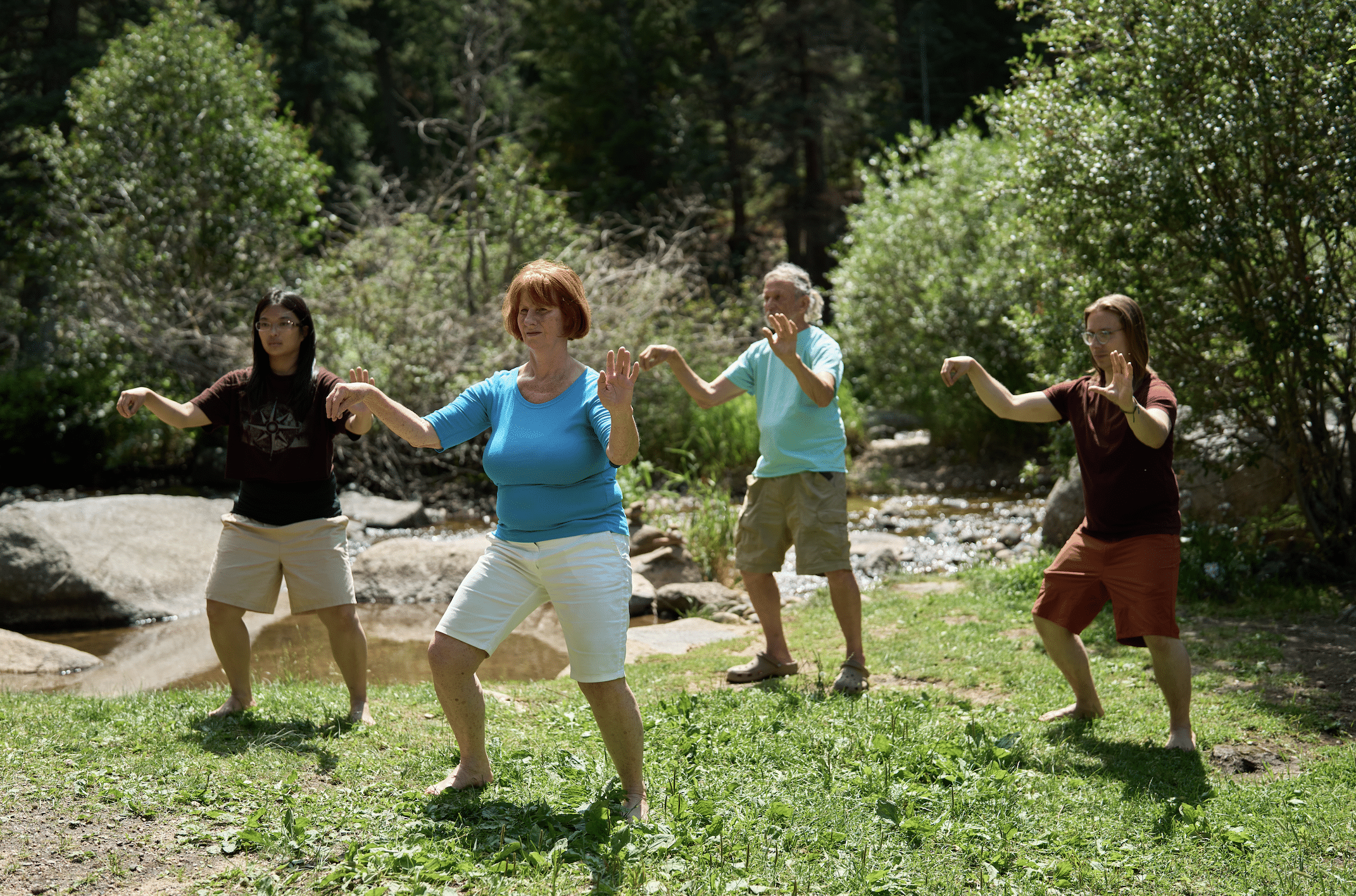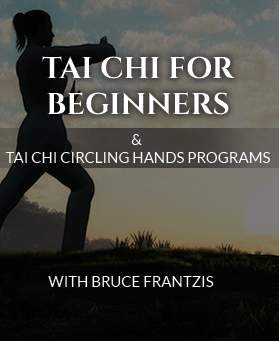People are drawn to Tai Chi for many reasons, perhaps from seeing something in a magazine, on a television show, reading something about it online, hearing about it in the news, or hearing about it from a friend. Others may have more experience and information about Tai Chi, but may not realize the full depth and breadth of what the practice of Tai Chi can offer.
While doing the exact same physical movements within Tai Chi by yourself or within self-defense methods there are seven distinctly different approaches that were present in all traditional Tai Chi (also true of Qigong and Bagua ).
The first approach to Tai Chi is for the purpose of general exercise and deeply relaxing the body. As you get older if you don’t keep your body moving, your body will begin to degenerate. This is the type of Tai Chi commonly known for being done in parks. If you ask people who are doing Tai Chi in the park why they do it, a majority would say “ it makes me feel better” – this is a way of doing Tai Chi for general health.
The second approach to Tai Chi is for stress relief, a systematic stress release which relaxes the central nervous system directly by feeling and relaxing physical structures such as your muscles which connect to your nerves. Most often when someone uses the word relax, they are referring to emotional relaxation.Tai Chi for stress relief is a method where focusing on physical relaxation (ie: relaxing your muscles) also happens to result in relaxation of the emotions.
The third approach toTai Chi is more rare, and that is how Tai Chi works as qigong medicine, meaning how to use internal (what is below your skin) techniques of Tai Chi to heal specific diseases. Most of the good Tai Chi schools in China are famous for this. In contrast, most people in the west who learn Tai Chi learned it for general health and never learned its medical aspects. For those who have learned some medical aspects, their knowledge is mainly for healing the negative hangover of physical traumas, how to get your bones, ligaments and physical structures back to normal again and functioning properly to get out of pain. Qigong medicine, however, is more comprehensive and has a much broader range of health issues and diseases it can treat.
The fourth approach to Tai Chi is a way of getting you to understand how the inside of your body works. All Tai Chi movements are based upon the principle that when one part of your body moves, all parts of your body move. In this approach to Tai Chi, you have to understand how you connect every part of your body to every other part of your body both internally and externally. A billionaire isn’t so interested in making $5, but is someone who can keep investing and multiplying their money until they become wealthy. Similarly someone who learns, understands and practices with how the inside of the body works with Tai Chi practice makes a progressively greater investment in their physical health and martial arts competence.
The fifth approach to Tai Chi is the knowledge of what these moves in the form are supposed to be able to be used for in a martial application, so that when you’re doing the form the form comes alive. Also, In the hope that if something were to happen to you that would be of a rough nature, you at least would know how to do something in response instead of just standing in a freeze response not knowing what to do
The sixth approach to Tai Chi is its martial arts side which involves three aspects:
- The first is martial play (push hands) – Push hands is not self defense but has you increasing your physical ability in everything you need to do to make self-defense techniques work. Push hands teaches the foundations of the techniques for combat, but is not combat in and of itself – it is a good learning tool, but it is not sufficient to be successful in combat.
- The second is martial combat – genuine self defense – Learning how each of the form movements can be applied in fighting, what is called bunkai in karate. This includes everything from self-defense to street fighting to how to disable an opponent.Tai Chi came out of a tradition of people who were bodyguards, convoy guards and the Chinese military. So these people weren’t kidding – they were training to kill.
- The third aspect is how to apply the martial arts techniques with extreme speed. Many people see the slow movements of Tai Chi and mistakenly think that these are used for fighting, and mistakenly assume this is ineffective. However this is not the way Tai Chi moves are used for fighting – in combat Tai Chi moves are done at a very fast speed for the greatest effect.
The seventh approach to Tai Chi, related to the martial aspect, is developing strength. My teacher originally came from a very wealthy family in Zhejiang province. His family were Chinese doctors for 11 generations and were major people in the herb business. When they eventually moved to Beijing, my teacher took it upon himself to train in Tai Chi to become strong because he was skinny and weak. Tai Chi makes you strong but it makes you strong from the inside – it’s not about pumping iron or lifting weights it’s about making the inside of your body incredibly strong, as well as incredibly healthy





Excellent overview I’ve been practicing teaching and still learning for many years Now in my mid seventies I continue to explore the depths of these arts and how they help me to understand how to move more efficiently by being aware of my breathing and alignment. Thank you for validating what I have long believed 🙏
Great stuff!
Thank you, this was very helpful and informative. Best, Peg
Thank you. I enjoy your lessons very much.
Thank you!
Thank you Bruce for such an in-depth and thorough blog. Totally enjoyed reading it and will read it again & again for the gems. I live in london UK, and planning to train with you and your Team some time in the near future.
The eighth approach is for the spiritual component.
But you have to find somebody, or something, to teach you about learning what’s inside. Most “teachers” I’ve seen just teach the “physical skeleton” .